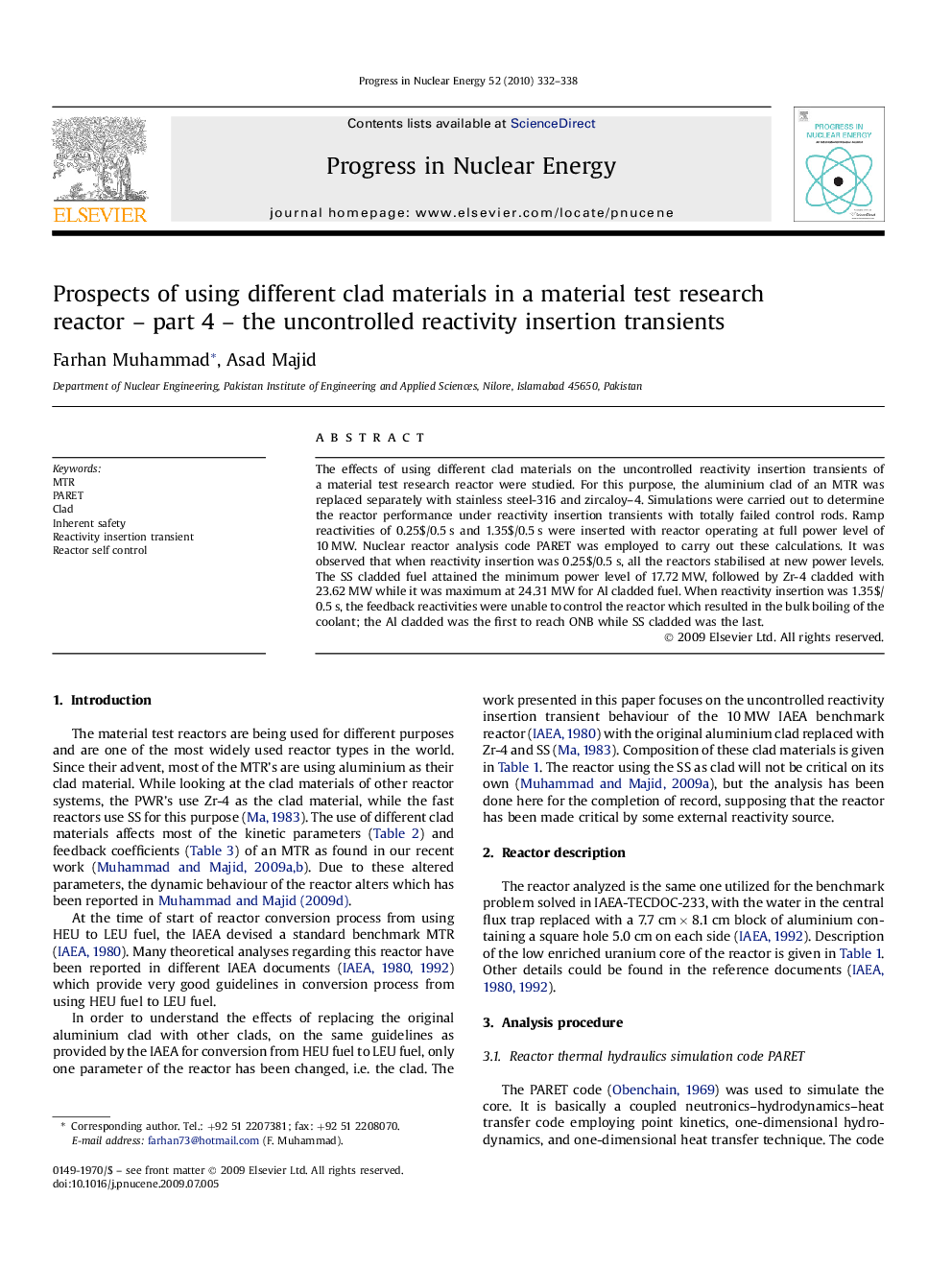| Article ID | Journal | Published Year | Pages | File Type |
|---|---|---|---|---|
| 1741535 | Progress in Nuclear Energy | 2010 | 7 Pages |
The effects of using different clad materials on the uncontrolled reactivity insertion transients of a material test research reactor were studied. For this purpose, the aluminium clad of an MTR was replaced separately with stainless steel-316 and zircaloy–4. Simulations were carried out to determine the reactor performance under reactivity insertion transients with totally failed control rods. Ramp reactivities of 0.25$/0.5 s and 1.35$/0.5 s were inserted with reactor operating at full power level of 10 MW. Nuclear reactor analysis code PARET was employed to carry out these calculations. It was observed that when reactivity insertion was 0.25$/0.5 s, all the reactors stabilised at new power levels. The SS cladded fuel attained the minimum power level of 17.72 MW, followed by Zr-4 cladded with 23.62 MW while it was maximum at 24.31 MW for Al cladded fuel. When reactivity insertion was 1.35$/0.5 s, the feedback reactivities were unable to control the reactor which resulted in the bulk boiling of the coolant; the Al cladded was the first to reach ONB while SS cladded was the last.
